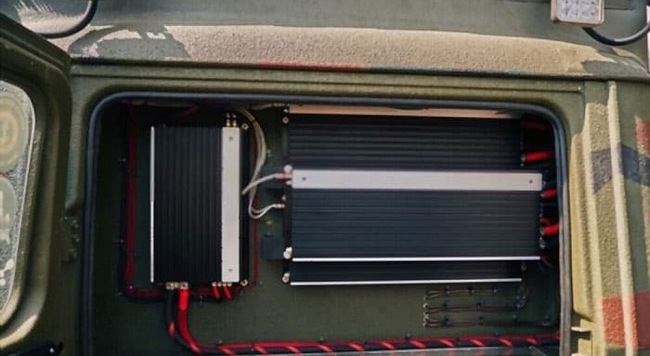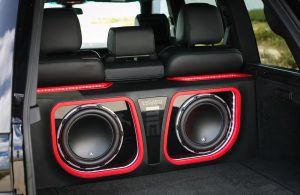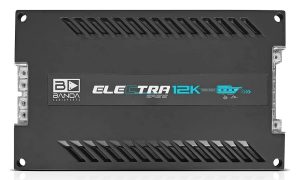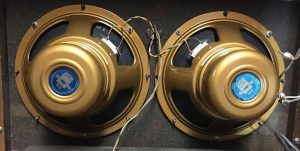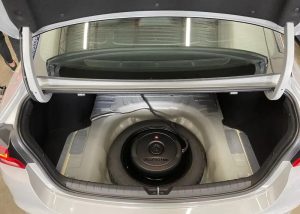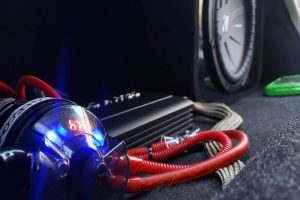As a fellow enthusiast of powerful car audio systems, I understand the thrill and excitement that comes with upgrading to a 3000-watt amplifier for your car stereo. However, to ensure that your investment pays off in optimal performance, one crucial factor you need to consider is the right wire gauge. In this comprehensive guide, I’ll share my personal experience and insights to help you navigate the world of wire gauges for a 3000-watt car stereo amp.
Contents
Wire Gauge Guide for 3000-Watt Car Stereo Amps:
| Distance (Feet) | Recommended Gauge |
| 0-4 | 4 |
| 4-8 | 2 |
| 8-12 | 1/0 |
| 12+ | Consult Guidelines |
Understanding the Basics
In the realm of car audio systems, the term “wire gauge” refers to the thickness or diameter of the wire, and it plays a critical role in optimizing the performance of your car stereo amplifier. The concept is straightforward: lower gauge numbers signify thicker wires. This is particularly crucial when dealing with high-powered amplifiers, such as the 3000-watt variant we’re discussing.
The significance of wire gauge lies in its impact on power delivery efficiency and the prevention of voltage drop. Voltage drop occurs when the resistance in the wire causes a reduction in the voltage reaching your amplifier, potentially leading to performance issues and even damage. Therefore, selecting the right wire gauge is akin to ensuring the smooth flow of power, vital for the amplifier to function optimally.
As you embark on the journey of upgrading to a 3000-watt car stereo amp, grasp the fundamentals of wire gauge. It’s the foundation upon which the success of your audio system upgrade is built, influencing everything from sound quality to the longevity of your equipment. Now, let’s delve deeper into the specifics to help you make informed decisions for an unparalleled car audio experience.
My 3000-Watt Amp Experience
The moment I upgraded to a 3000-watt amplifier for my car stereo marked a seismic shift in my audio journey. The promise of enhanced audio quality and thunderous bass was irresistible. However, the realization quickly set in that the performance of my amplifier hinged on a factor often overlooked: the wires connecting it to the battery and speakers.
It was a transformative experience. The sheer power of the 3000-watt amp demanded a meticulous approach to wiring. Inadequate wire gauge led to performance bottlenecks and undermined the very essence of the upgrade. This realization prompted a deep dive into understanding the intricacies of wire gauges, distances, and materials—a journey that has since defined my commitment to achieving the full potential of my car audio system. Join me as I share the insights gained and lessons learned, unraveling the complexities of wire gauges for a 3000-watt car stereo amp.
Determining the Right Wire Gauge
- Power Requirements: The first step in choosing the right wire gauge is understanding the power requirements of your 3000-watt amp. Check the amplifier’s specifications for its power rating and recommended wire gauge. This information is crucial for preventing overheating and ensuring a stable power supply.
- Distance Matters: Consider the distance between your amplifier, battery, and speakers. Longer distances require thicker wires to compensate for potential voltage drop. Measure the total length of the wire needed, as this will influence the resistance and overall performance of your car audio system.
- Amp Installation Kit: Investing in a high-quality amp installation kit can simplify the process. These kits often include appropriately sized power and ground wires, as well as other essential components like fuse holders and connectors. Look for kits designed for 3000-watt systems to ensure compatibility.
- Wire Material: The material of the wire also plays a role in its conductivity. Copper is a preferred choice due to its superior conductivity compared to aluminum. While copper wires may be more expensive, they are worth the investment for optimal performance.
Choosing the Right Gauge
Now, let’s break down the recommended wire gauge based on the power requirements of your 3000-watt amp:
- 0-4 Feet: For short distances, up to 4 feet, a 4-gauge wire is generally sufficient. This ensures minimal resistance and efficient power transfer.
- 4-8 Feet: If your installation requires wires between 4 and 8 feet, consider upgrading to a 2-gauge wire to compensate for the increased distance.
- 8-12 Feet: For distances ranging from 8 to 12 feet, a 1/0 (pronounced “one ought”) gauge wire is recommended. This heavier gauge helps prevent voltage drop over longer stretches.
- 12+ Feet: If your wiring exceeds 12 feet, it’s advisable to consult the amplifier manufacturer’s guidelines or seek professional advice to determine the appropriate wire gauge. In some cases, a 1/0 gauge may still be sufficient, while others may recommend even thicker wires.
Conclusion
In my journey to optimize my 3000-watt car stereo amp, I learned the importance of choosing the right wire gauge for a seamless and powerful audio experience. By understanding the power requirements, considering the installation distance, and investing in quality materials, you can ensure that your amplifier operates at its full potential.
Remember, a well-chosen wire gauge not only enhances performance but also protects your investment in the long run. Don’t hesitate to seek guidance from professionals or refer to the manufacturer’s recommendations to fine-tune your car audio setup. With the right wire gauge, you’ll be able to unleash the full potential of your 3000-watt amp and enjoy an immersive and high-fidelity driving experience.
FAQs: Unraveling the Mysteries of Wire Gauges for 3000-Watt Car Stereo Amps
Q1: Why does wire gauge matter for a 3000-watt car stereo amp?
A1: Wire gauge directly impacts power delivery efficiency and helps prevent voltage drop. With a high-powered amplifier like the 3000-watt variant, choosing the right gauge ensures optimal performance and safeguards against potential damage.
Q2: What happens if I use the wrong wire gauge?
A2: Using an incorrect wire gauge can lead to voltage drop, diminishing the performance of your amplifier. This can result in suboptimal sound quality, overheating issues, and potential damage to the amplifier.
Q3: How do I determine the right wire gauge for my setup?
A3: Consider factors such as the power requirements of your amplifier, installation distance, and wire material. Use the recommended wire gauge chart provided by the manufacturer as a starting point, adjusting based on your specific needs.
Q4: Can I use an amp installation kit for my 3000-watt system?
A4: Yes, investing in a high-quality amp installation kit designed for 3000-watt systems is advisable. These kits typically include appropriately sized power and ground wires, along with essential components like fuse holders and connectors.
Q5: Is copper wire worth the extra cost?
A5: Yes, copper wire is preferred over aluminum due to its superior conductivity. While it may be more expensive, the benefits in terms of performance and longevity make it a worthwhile investment for a 3000-watt car stereo system.
Q6: How does distance affect wire gauge selection?
A6: Longer distances between the amplifier, battery, and speakers require thicker wires to compensate for potential voltage drop. Measure the total length of the wire needed and consult the recommended gauge chart to ensure efficient power transfer.
